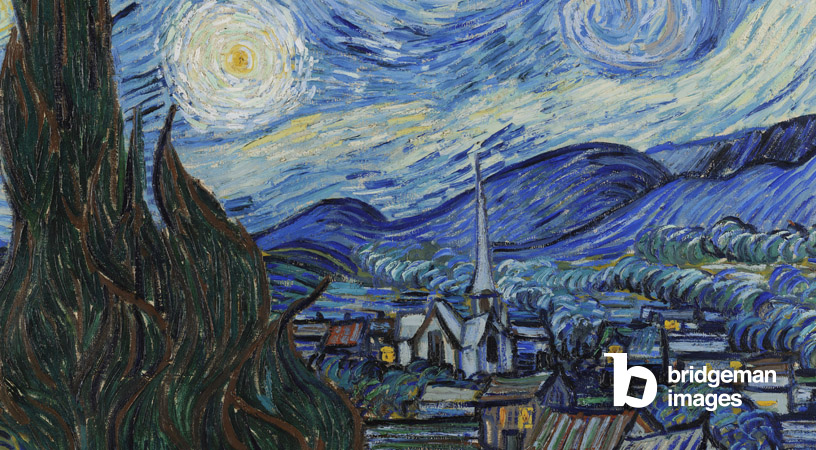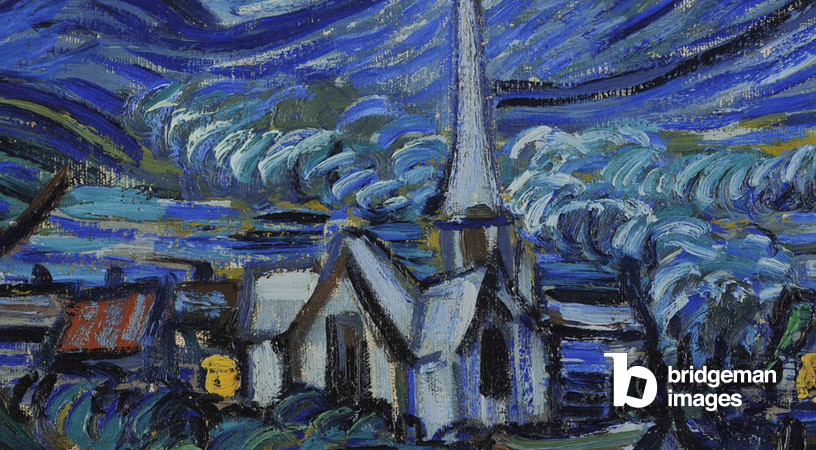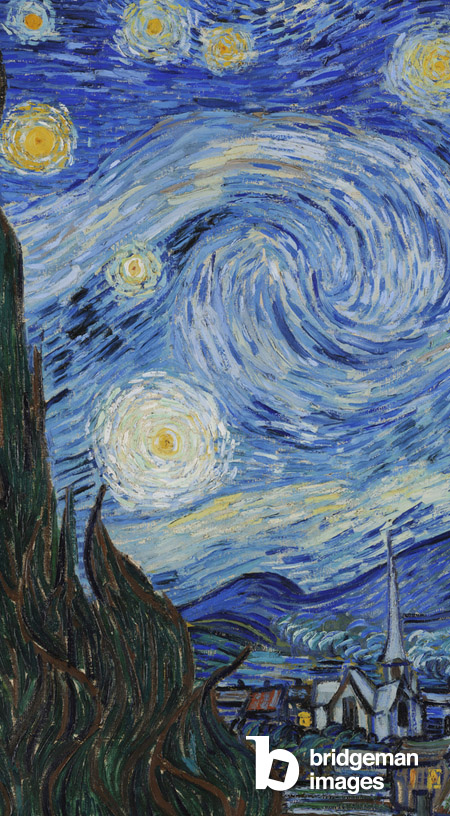Published 20/10/2023
Of all of the famous works by Vincent Van Gogh, The Starry Night painting stands out as one of the greatest. Recognised and recreated all over the world, this scene can be conjured in the minds of millions with just the mention of the title. It is characteristically post-impressionist, just like the other paintings from this creator’s displays, and though it was first revealed in 1889, it has firmly earned its place as a treasured piece in modern times.

From His Time in an Asylum
Vincent Van Gogh spent one year in a hospital because of his poor mental health and all of the challenges that came with it. During this period of his life, he created over 100 masterpieces including the Starry Night. It is said to be a depiction of the view from his chamber window of the night sky, though painted from memory during daylight hours. It is clear through the colour choice, brush strokes, and general content that this piece was one of anguish, struggle, and respect for nature.
Why Was Van Gogh in an Asylum?
He spent around twelve months in the care of the staff at Saint-Remy-de-Provence of his own volition. It was here, self-admitted, that he wished to connect with his mental health struggles that would dictate most of the remaining years of his life. It is no major secret that this tortured mind felt pain in abundance, and it is clear through his creations how this manifested through the brush and onto the canvas. Everyone knows the infamous tale of how he removed his own left ear in 1888 after a feud with a fellow contemporary and this came just before he moved into the asylum.
What You Can See on the Canvas
The painting itself is oil-based on a classic canvas. There are blues, yellows, and blacks all coming together to create a formidable night sky with shining stars, a towering tree, and a town lying below. It is undeniably a picture of the night, as not only are the stars burning brightly in the scene, but the colours are dark, akin to shadows and the witching hour. The varying shades of blue make it seem as though there is a strong wind in the air, almost storm like in its existence which only fuels the intensity of the painting as a whole. This only serves to highlight the strength of the moon in the top right-hand corner and the undeniable presence of Venus in the lower left section. Though the sky is said to be something he saw through his own eyes, the town is largely noted to be a fictional creation based on other settings throughout his life.

Modern Culture
It remains one of the most relevant and adored paintings throughout the whole of history. Van Gogh, though never recognised throughout his living years, is certainly cherished by the generations that came after. In modern culture, you will undoubtedly find the Starry Night being recreated in a plethora of formats including apparel, reproduction canvases, magnets, notebooks, and everything else in between.
Where Is It Now?
In 2023, if you wish to gaze upon the starry turmoil with your own eyes, you must travel to New York. It is here, in the Museum of Modern Art, that you will find the Starry Night hanging serenely for whoever wishes to view it. This picture has had a home in New York since 1941, so it is well established, to say the least. Before this, it hung in the Paul Rosenburg Gallery.
How Much Is It Worth?
While it is all but impossible to put a figure on such a profound, impactful, and astounding work of masterful creation, the most recent indications suggest it is worth at least $100 million. Though it was last purchased in 1990 for $50 million, it has naturally appreciated over the decades and is both highly desired in the art world and increasingly valuable too.
How Long Did It Take to Create?
There is no real sense of how long it took Van Gogh to create the Starry Night. All that is known is that the painting came from his time during a period of extreme mental instability when at the asylum, and it was at some point over the months here that the canvas was completed. That being said, he spent ten years actively painting. This decade he dedicated to his craft and produced over 800 paintings, many of which continue to reign supreme in the modern era. You may recognise some of the works including:
· Vases with Fifteen Sunflowers
· Irises
· Van Gogh self-portrait
· Café terrace at night
· Starry Night over the Rhone
· Bedroom in Arles
· The Yellow House
· Van Gogh’s Chair
· Wheatfield
· At Eternity’s Gate
Trivia and Facts About the Starry Night
It is always necessary to conclude with various facts that have been gathered about such works of art throughout the course of their existence. The Starry Night has some of the most interesting back stories and trivia assigned to any painting in time, and here they are.
Van Gogh Did Not Believe His Work Was Good
This man, who was plagued with poor mental health and inner battles, said multiple times primarily to his brother through written correspondence, that he did not believe in this painting. He thought it was nothing special, and this is how he considered the majority of his paintings. It is not hard to see why when you consider that he only ever sold one piece while he was alive. If only he were here today to witness the profound impact he has had on the world of art.

Depictions of Death
Some people consider the painting to foreshadow Van Gogh’s eventual suicide. The foreboding image of the Cypress tree, shrouded in darkness, is interpreted freely as a symbol of death and the end of it all. It was often found in cemeteries, and Van Gogh even spoke of taking death to meet a star in his time.
Confirming the Presence of the Planet Venus
Many analyses have been carried out in modern times, and the conclusion speaks clearly of Venus being visible in the painting. Looking at the star's projected trajectory and position from the time of its creation, it is apparent that Venus was shining the most brightly at the time and this is visible on the canvas.
Other Paintings with Stars
Van Gogh had one other noticeable work that represents a starry sky over the river Rhone in France. He travelled here and spent time in the area, and created this piece before the famous Starry Night came to be. Lots of his paintings feature skies and strong ties with nature, as he often painted flowers and country-style backdrops throughout his works. There was also most noticeably a focus on faces and he created many a self-portrait too.
The Painting Was Owned by His Brother
Upon his death, most of Van Gogh’s work went to his brother, Theo. When he too died, Theo’s wife took ownership, and it is to her that we accredit Gogh’s posthumous fame. She saw the genius and beauty in his work and worked to showcase what he built after he passed away.
Starry Night is well-loved, well-known, and one for the ages. It will stay where it belongs, displayed in a renowned gallery for all to see and appreciate for the years to come.
A selection of our Post-Impressionistic works
Visit Bridgeman Editions to purchase an exclusive print of this piece.


